Birdfinding.info ⇒ Oahu’s last surviving endemic honeycreeper is fairly common in suitable habitat, and is one of the few native Hawaiian landbirds that has increased in recent decades. It was probably never endangered, but had retreated to the higher ridges, then in the 1980s began to recolonize lower elevations. It can be found consistently near Honolulu along Tantalus Drive, on trails such as Aiea Ridge, Manoa Falls, Manoa Cliffs, Pu’u Ohia, Wa’ahila Ridge, and Wiliwilinui Ridge, Wailupe Valley, and Kuli’ou’ou Valley. In western Oahu its preferred habitat is less accessible, but it can be found along trails into the Wai’anae Range, such as the one up Mount Ka’ala.
Oahu Amakihi
Chlorodrepanis flava
Endemic to Oahu, where it occurs throughout the island in forests and other wooded areas, including parks and gardens. It has adapted somewhat to non-native plantings, but is most numerous in native koa forests, mainly in foothills and mountains.
Identification
A small, olive-colored honeycreeper with a thin, decurved bill.

Oahu Amakihi, male. (Palikea, Oahu, Hawaii; April 16, 2019.) © Eric VanderWerf
The male is yellow-olive except for a subtle blackish mask and faint whiskers, and brown in the wings and tail.
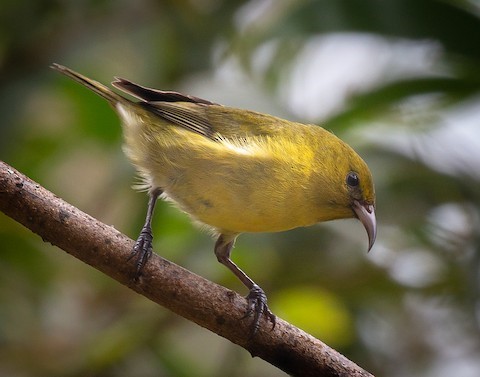
Oahu Amakihi, male. (Aiea Ridge, Oahu, Hawaii; June 20, 2020.) © Lainie Berry
Females and immatures are pale gray, often washed yellowish or olive, with two distinct wingbars.
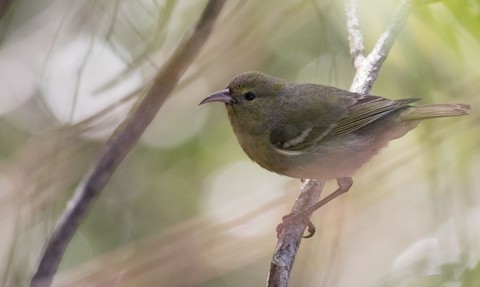
Oahu Amakihi, female or immature. (Aiea Ridge, Oahu, Hawaii; March 30, 2017.) © Doug Gochfeld
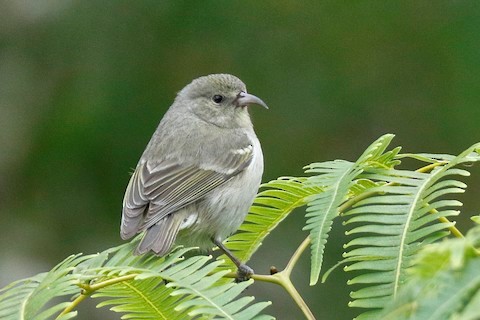
Oahu Amakihi, female or immature. (Aiea Ridge, Oahu, Hawaii; January 27, 2019.) © Sharif Uddin
Notes
Monotypic species.
IUCN Red List Status: Vulnerable.
See below for a comparison of the Oahu Amakihi with Oahu Alauahio.
Cf. Oahu Alauahio. The presumed-extinct Oahu Alauahio closely resembled the Oahu Amakihi, and its fate has become mysterious due in part to their similarity. In both species, the male plumage is mostly yellow-to-olive, and the female and immature plumages are much plainer with whitish wingbars. The high potential for confusion casts doubt on all reports of the alauahio that are not supported by physical evidence—i.e., all modern reports except for specimens taken in 1950 and 1968.
Structurally, the amakihi has a longer and much more decurved bill. In coloration, the male amakihi is more uniformly yellow-olive, whereas the male alauahio had vivid-yellow underparts and face that contrasted with darker olive-brown upperparts. Female and immature amakihis are also more uniform in coloration, mostly pale-grayish, sometimes with a yellowish wash, whereas female and immature alauahios had contrasting whitish underparts and dark-brown upperparts.
More Images of the Oahu Amakihi
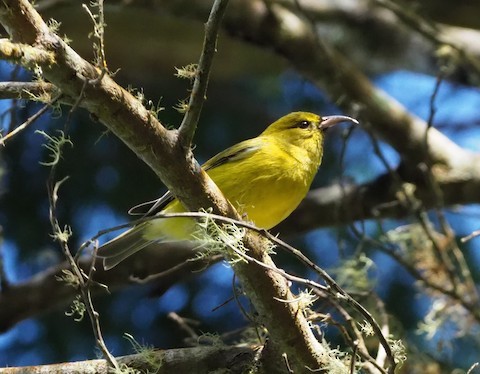
Oahu Amakihi, male. (Palehua, Oahu, Hawaii; October 22, 2018.) © Stephan Lorenz
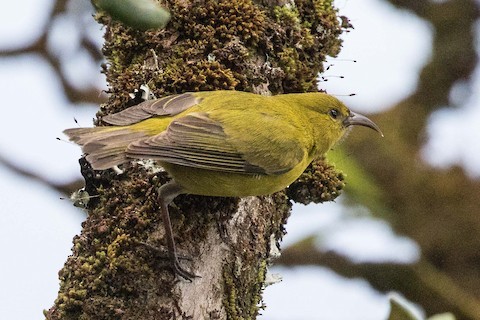
Oahu Amakihi, male. (Palikea, Oahu, Hawaii; April 16, 2019.) © Eric VanderWerf
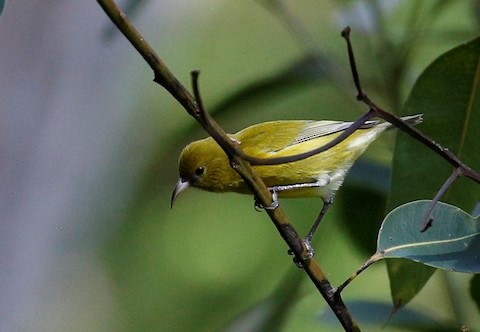
Oahu Amakihi, male. (Aiea Ridge, Oahu, Hawaii; October 12, 2019.) © Laura Keene
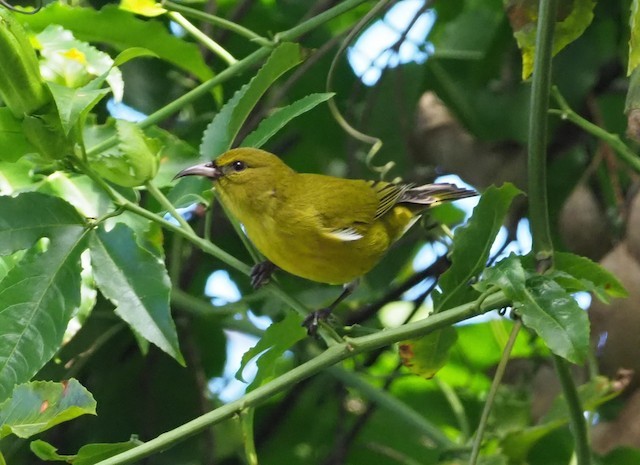
Oahu Amakihi, male. (Palehua, Oahu, Hawaii; October 22, 2018.) © Stephan Lorenz
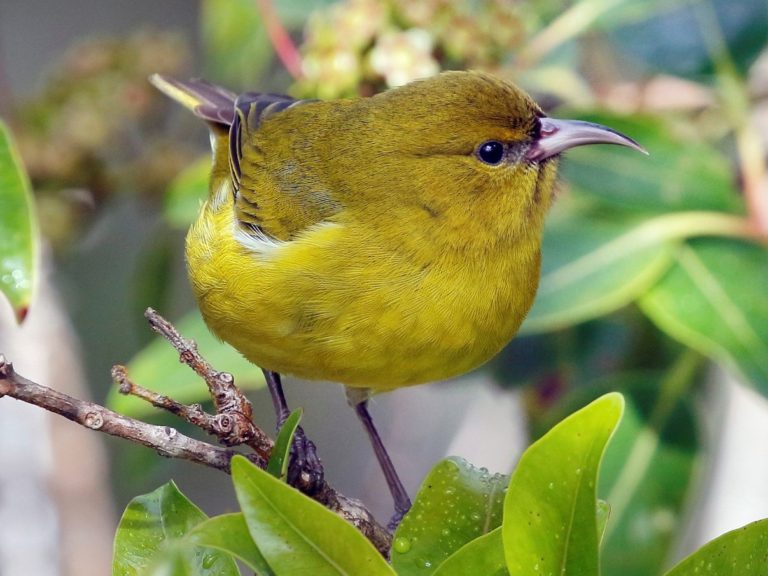
Oahu Amakihi, male. (Aiea Ridge, Oahu, Hawaii; January 6, 2018.) © Sharif Uddin

Oahu Amakihi, male. (Tantalus Drive, Honolulu, Hawaii; October 20, 2019.) © Nick Kalodimos
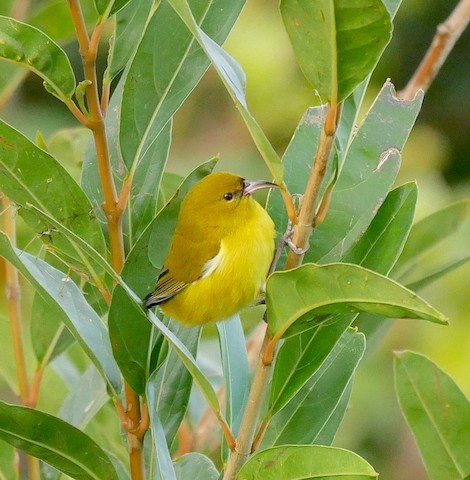
Oahu Amakihi, male. (Tantalus Drive, Honolulu, Hawaii; February 9, 2020.) © Nick Kalodimos

Oahu Amakihi, male. (Aiea Ridge, Oahu, Hawaii; January 5, 2019.) © Sharif Uddin
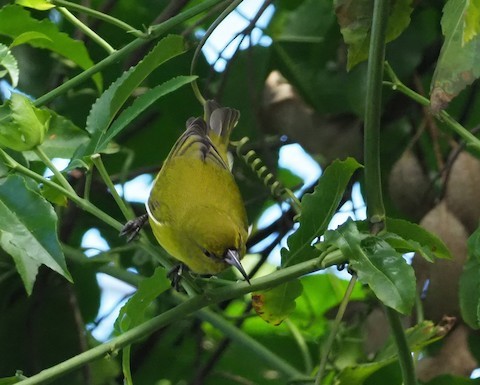
Oahu Amakihi, male. (Palehua, Oahu, Hawaii; October 22, 2018.) © Stephan Lorenz

Oahu Amakihi, male. (Aiea Ridge, Oahu, Hawaii; May 29, 2009.) © Michael Walther
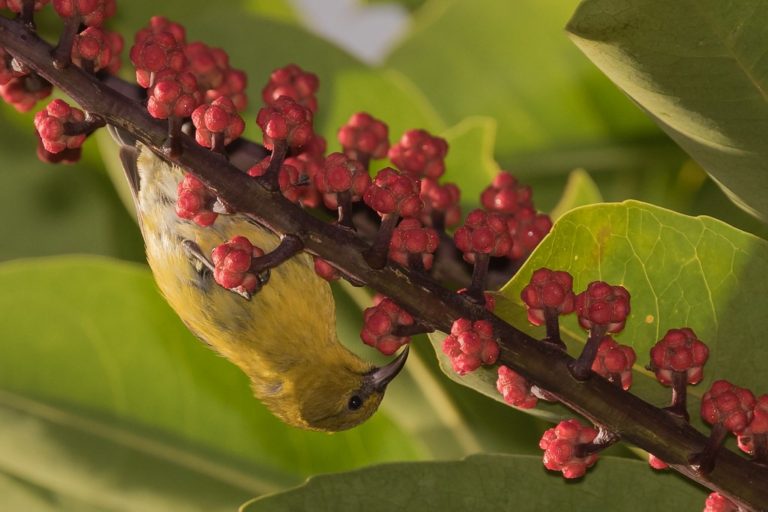
Oahu Amakihi, male. (Aiea Ridge, Oahu, Hawaii; January 7, 2018.) © Sharif Uddin

Oahu Amakihi, male. (Tantalus Drive, Honolulu, Hawaii; February 26, 2017.) © Sharif Uddin
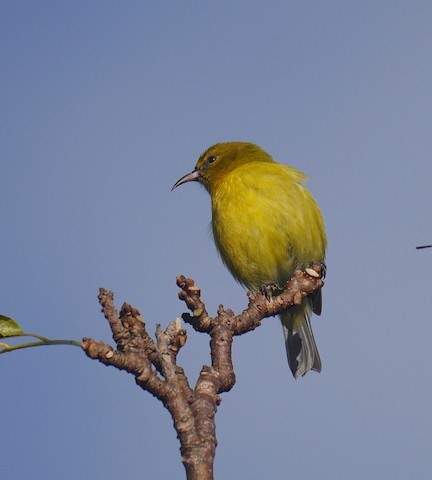
Oahu Amakihi, male. (Tantalus Drive, Honolulu, Hawaii; January 18, 2020.) © Nick Kalodimos

Oahu Amakihi, male. (Tantalus Drive, Honolulu, Hawaii; December 28, 2019.) © Keith Dickey
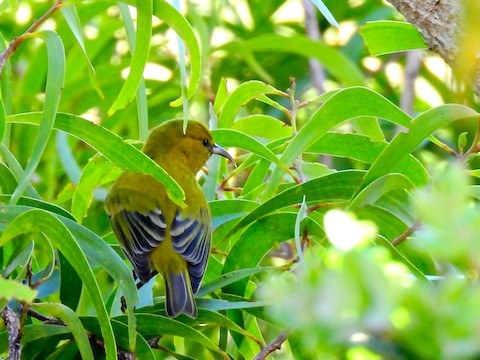
Oahu Amakihi, male. (Aiea Ridge, Oahu, Hawaii; January 20, 2019.) © Michael Young

Oahu Amakihi, female. (Tantalus Drive, Honolulu, Hawaii; January 2, 2020.) © Michael Walther
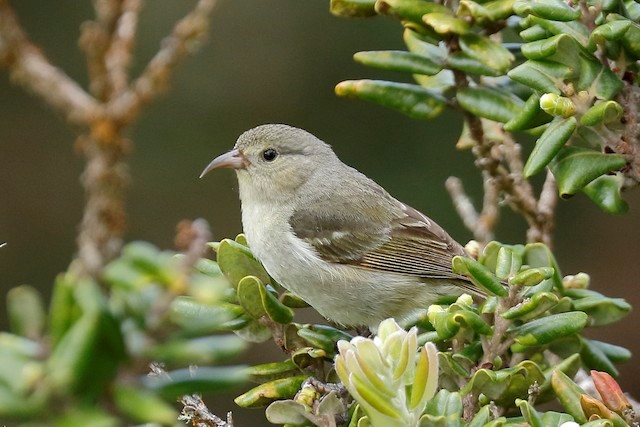
Oahu Amakihi, immature. (Aiea Ridge, Oahu, Hawaii; March 17, 2018.) © Sharif Uddin
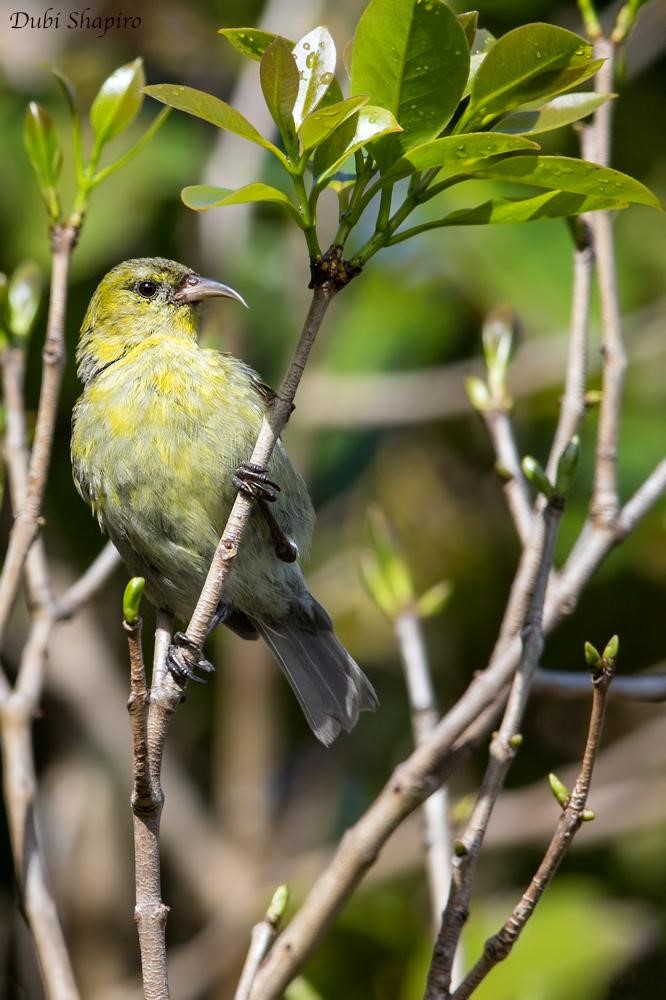
Oahu Amakihi, female. (Oahu, Hawaii; June 27, 2016.) © Dubi Shapiro
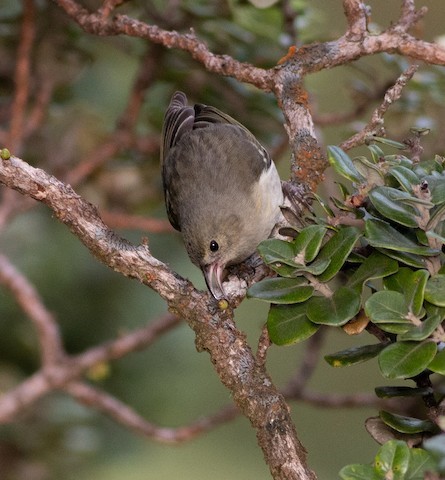
Oahu Amakihi, immature. (Aiea Ridge, Oahu, Hawaii; January 15, 2019.) © David Brock
References
BirdLife International. 2016. Chlorodrepanis flava. The IUCN Red List of Threatened Species 2016: e.T22728299A94978799. https://dx.doi.org/10.2305/IUCN.UK.2016-3.RLTS.T22728299A94978799.en. (Accessed May 8, 2020.)
eBird. 2020. eBird: An online database of bird distribution and abundance. Cornell Lab of Ornithology, Ithaca, N.Y. http://www.ebird.org. (Accessed May 8, 2020.)
Pratt, H.D. 2005. The Hawaiian Honeycreepers: Drepanidinae. Oxford University Press.
Pratt, H.D. 2020. Oahu Amakihi (Chlorodrepanis flava). In Handbook of the Birds of the World Alive (J. del Hoyo, A. Elliott, J. Sargatal, D.A. Christie, and E. de Juana, eds.). Lynx Edicions, Barcelona. https://www.hbw.com/node/61444. (Accessed May 8, 2020.)
Pyle, R.L., and P. Pyle. 2017. The Birds of the Hawaiian Islands: Occurrence, History, Distribution, and Status. Version 2 (January 1, 2017). http://hbs.bishopmuseum.org/birds/rlp-monograph/. B.P. Bishop Museum, Honolulu, Hawaii.
Xeno-Canto. 2020. Oahu Amakihi – Chlorodrepanis flava. https://www.xeno-canto.org/species/Chlorodrepanis-flava. (Accessed May 8, 2020.)
